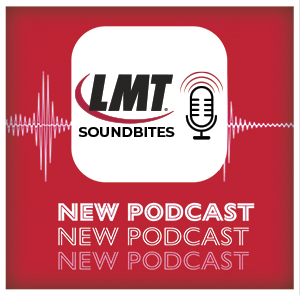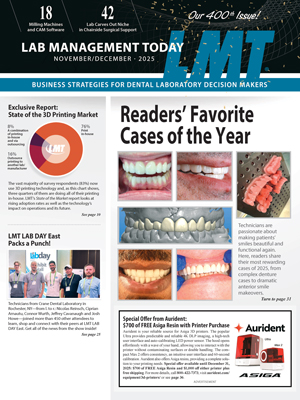Many of LMTâs articles stem from things we experience here. When the editorial team cooked up the theme for this monthâs issue, for example, you might say we were all âsteamed up.â We, too, have business problems that need to be solved.
In fact, the last quarter of 2011 was a whopper that tested our mettle but with our issues now behind us, we emerged sleeker and wiser for our trials and tribulations. Sometimes the solution to one problem resolves others you donât even realize are nagging at your heels. Here are some issues weâve had that may resonate with you:
PROBLEM: How can I ensure Iâm investing in the right software technologies?
STRATEGY: Sometimes you canât know what ârightâ is until you try it. The ideal strategy is one that enables you to test a system before incorporating it. Whenever thatâs possible, thatâs the way to go.
For us, the challenge was to select a Customer Relationship Management (CRM) software
program that could be customized for our needs. Because of the customization requirement, we couldnât âtestâ it beyond the demo package.
We worked with the systemâs software engineers for many long and grueling hours to get the customization right but, once in use, many of our processes seemed to take twice as long as they did beforehand. After thousands of dollars and lots of effortâalong with patience to make sure our frustration wasnât caused by a steep learning curveâwe gleefully gave segments of the CRM the old âheave ho,â thereby ending a long nightmare of aggravation.
Lesson learned: just because a process can be automated doesnât mean it should be automated! Though we are huge fans of digital technology and lean thinking, we also convinced ourselves that not all company functions should be centralized.
PROBLEM: In our quest to become more efficientâto incorporate lean manufacturing principlesâwe find resistance from some of our customers. How do we get them on board with the changes weâve made?
STRATEGY: When you take the red pill over the blue or choose to zig while others zag, you have to draw that line in the sand to state âthis is the side Iâm onâ when adapting new technologies. Getting digitally âoutfittedâ usually requires a significant investment, not just in time and money, but in customer service follow through so you donât leave your customers hanging when you change your processes.
Since September, weâve been advertising The BRIDGEâour new, interactive community resource at LMTmag.comâto explain that ALL LAB DAY registration is taking place via this new interface. To make sure Users have a go-to person to help with any
questions or concerns, we hired Lauren Meehan as our Online Media Strategist. Her job is to oversee all issues related to The BRIDGE.
This new registration processâwhich requires a unique email addressâenables us to work faster, better and smarter. It eliminates hundreds of hours we used to spend after each show deciphering handwritten registration cards used to update your subscriber information. Postal regulations require these updates; now, for those attending the show or becoming a User on The BRIDGE, itâs a simple, one-step update!
Nevertheless, Lauren has received about a dozen phone calls from irate subscribers who did not want to use an email address to sign up for LAB DAY. Though we donât relish the idea of leaving anyone out, we can no longer justify using our outmoded system. Anyone can create an email address; itâs free, but more importantly, it is integral to the way the workforce of the new millennium functions.
We feel those who are not able or willing to take even this small step will find themselves at a great disadvantage as the entire world continues to be transformed by digital processes. So, even though we put resources in place [in the form of Lauren] to help the transition, weâve drawn the line in the sand to say this is one way in which we are embracing âleanâ and, at the same time, helping to lead our community forward.
PROBLEM: How do I ensure quality control when training several new employees at the same time?
STRATEGY: Document your procedures.
About 10 years ago, when LMT was experiencing growing pains, the editorial team created a how-to document for new hires called âLMT 101â which itemizes who does what at the company, provides step-by-step procedures and detailed deadlines, and includes department specifics about our organization and workflow.
When youâre extremely familiar with the way things are done, itâs challenging and time consuming to put it all down on paper but itâs invaluable in the long run.
This fall we hired several new team members within weeks of one another. We quickly came to appreciate this all-encompassing and written manual so that a new staff member can hit the ground running. It is fluid, meaning as our processes change or we add new ones,
itâs continuously updated.





Aaron Hoffman
David Lesh